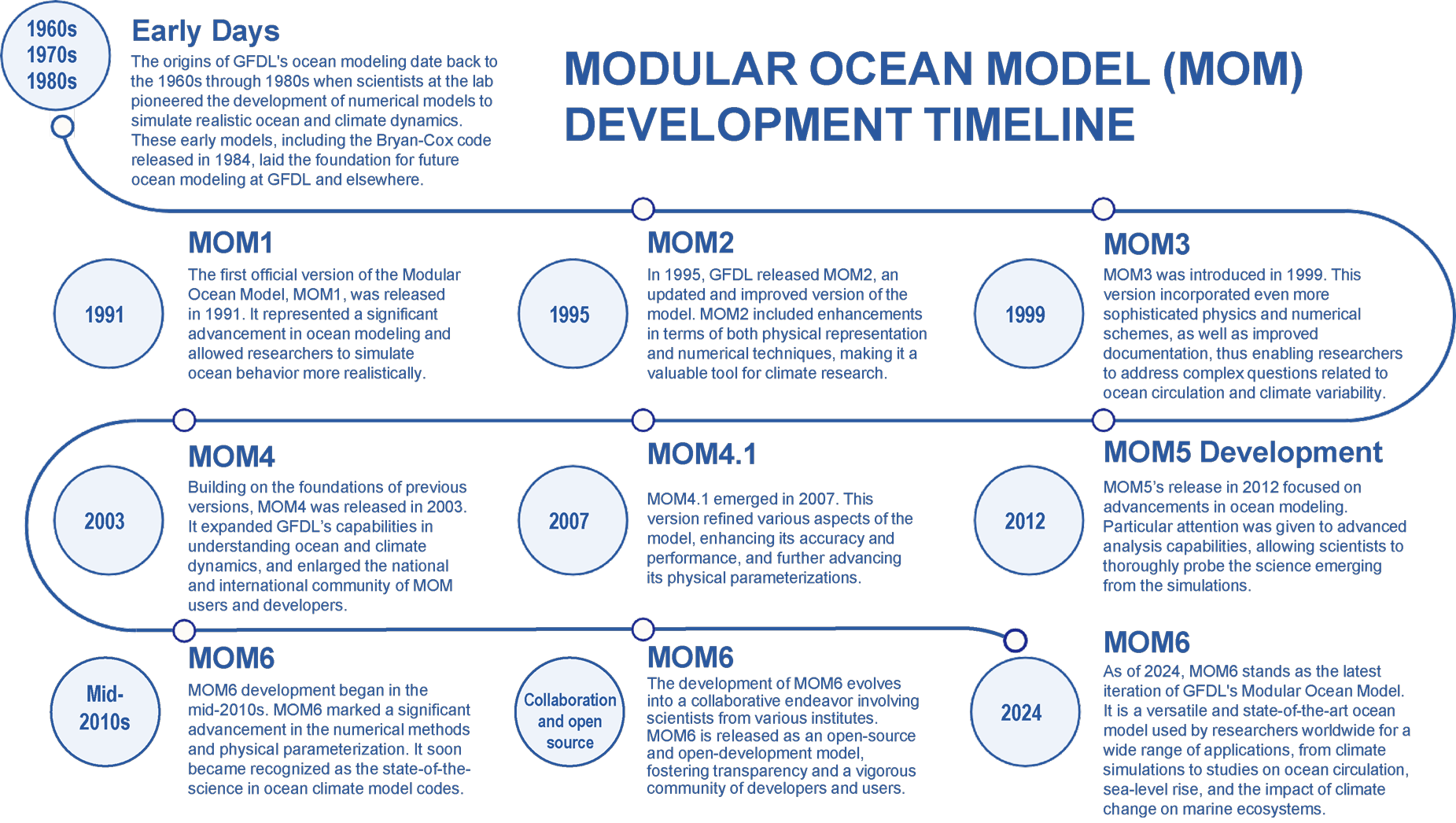June 18th, 2024
June marks Ocean Month, so it is fitting to acknowledge the significant impact that oceans have on climate and everyday life, and to highlight the importance of continued research and innovation in ocean modeling. At GFDL, the latest version of the lab’s Modular Ocean Model, MOM6, represents a major advancement in modeling oceanic and climatic processes. Developed with a commitment to enhancing the understanding of the ocean’s influence on climate, MOM6 continues the legacy of its predecessors while introducing new advances in scientific collaboration and open-source development.
MOM’s development began in the mid-1980s, aimed at providing a robust tool for simulating ocean circulation and its effects on global climate. Each subsequent version of MOM has incorporated more sophisticated physics and numerical schemes to better address pressing questions of ocean circulation and climate variability. For example, MOM4 brought improvements in ice-ocean interactions, which are vital for studies on polar regions and sea-level rise. MOM5 advanced these capabilities further, improving computational efficiency and integrating more detailed marine ecosystem models.
With MOM6, introduced in 2015, the focus expanded to include not just advancements in modeling technology but also fostering a broader, more inclusive scientific community. MOM6 adopted an open-development framework, greatly widening its developmental and application scope by involving scientists from around the world. This shift not only spurred rapid enhancements in the model but also ensured its adaptability to the evolving challenges of climate science.
For the 2024 hurricane forecasting season, NOAA has put MOM6 into operational forecasting. When coupled with NOAA’s Hurricane Analysis and Forecast System (HAFS), MOM6 will improve the representation of the key role the ocean plays in driving hurricane intensity. Developed by GFDL, it was adapted within the coupled HAFS by the National Weather Service’s Environmental Modeling Center, the Atlantic Oceanographic and Meteorological Laboratory, and NOAA’s Cooperative Institute at the University of Miami. In future years, MOM6 will assimilate an increasing array of ocean data from satellites, buoys, ocean gliders, and other autonomous systems to enhance forecasting accuracy.
During its first year of operations, MOM6 will be coupled with an operational version of HAFS, while the current ocean forecast model (the HYbrid Coordinate Ocean Model) will be coupled with another version of HAFS. Researchers anticipate that running two different ocean models will provide a broader range of information for forecasters, which is beneficial when there are uncertainties at the air-sea interface.
Looking ahead, the continued development of MOM6 is set to deepen the understanding of the ocean’s role in climate dynamics and expand its applications to address broader environmental challenges. The evolution of MOM, from its inception to the MOM6 model, highlights GFDL’s dedication to advancing ocean modeling. As we recognize Ocean Month, it’s important to remember the critical role oceans play in shaping our climate and sustaining life, making it essential to support ongoing research and innovation in ocean modeling.



